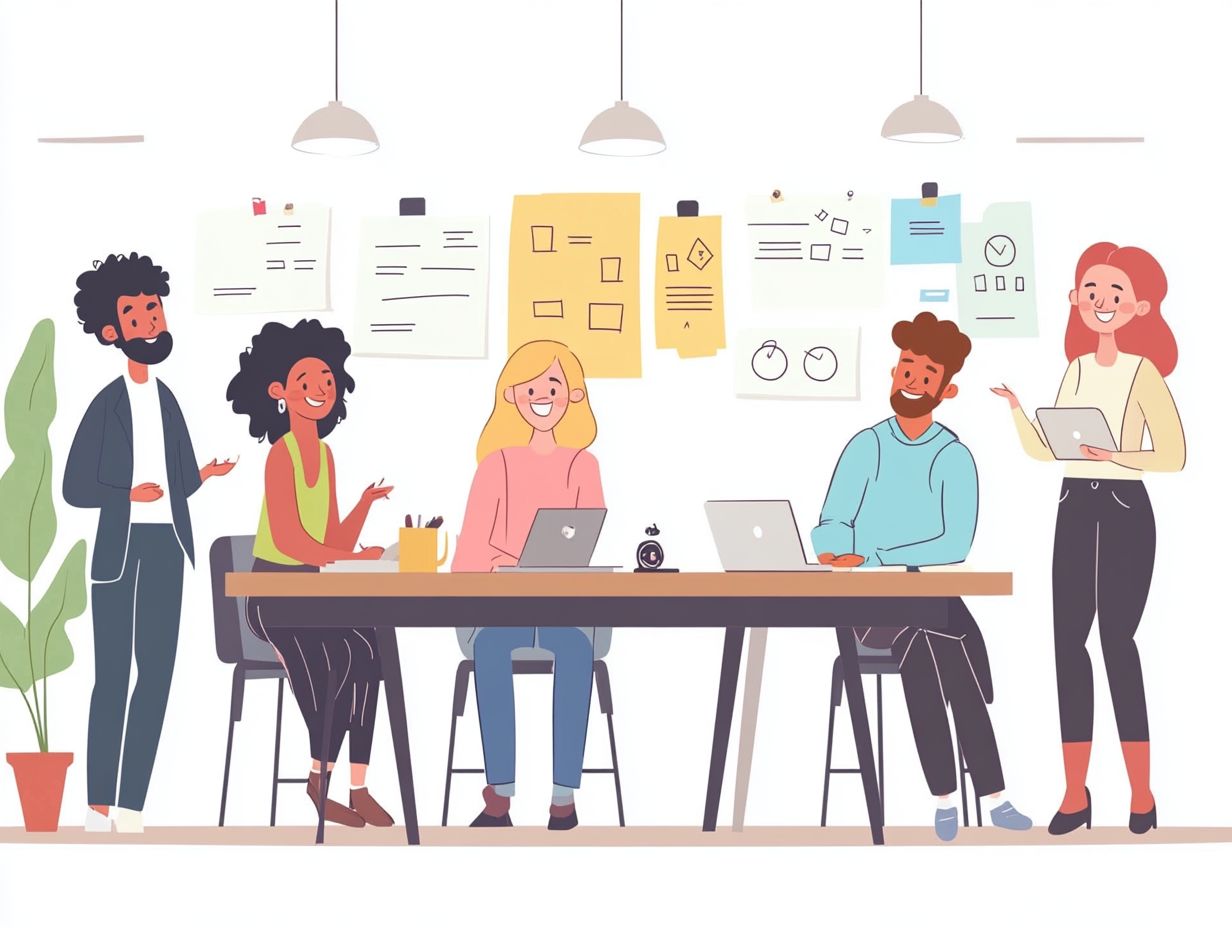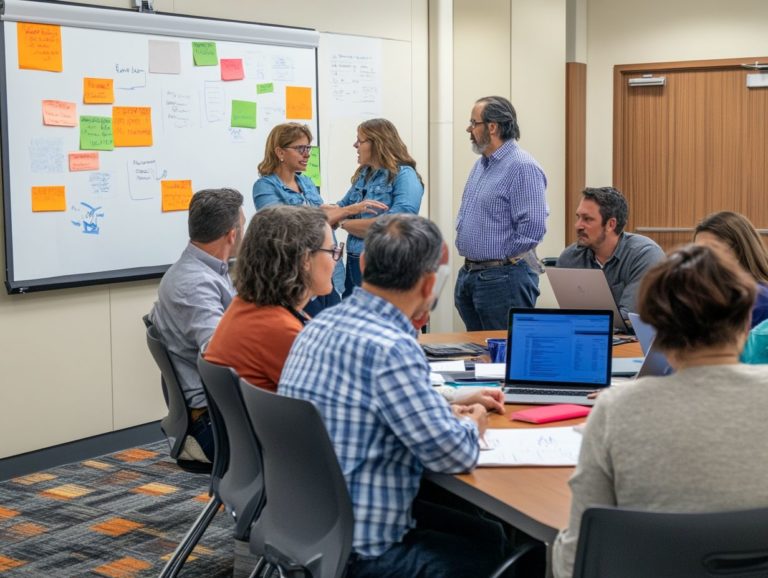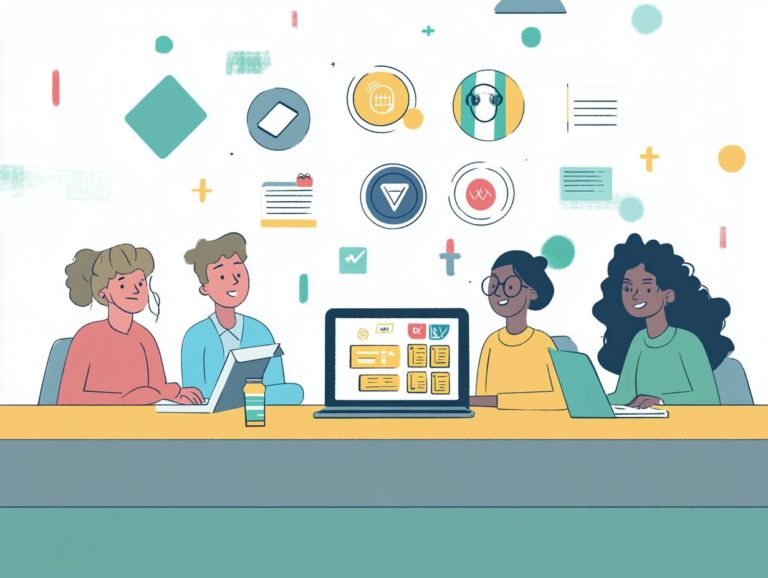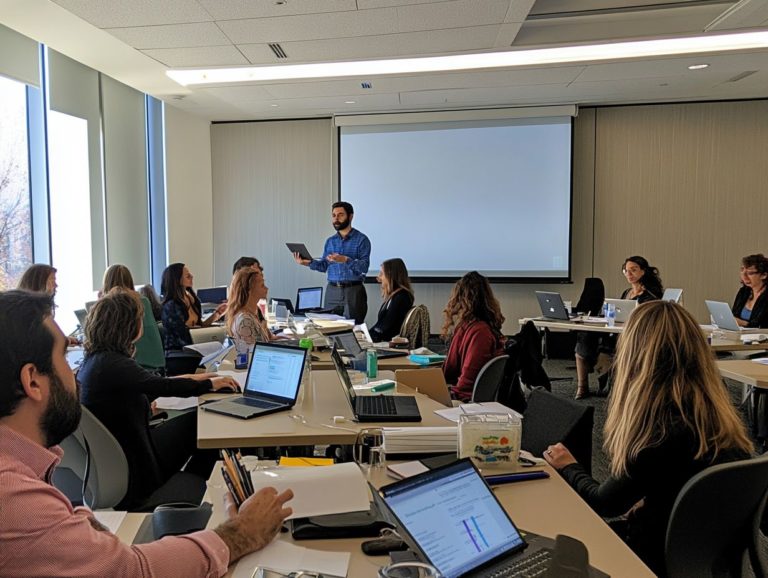Creating a Culture of Skill Development
In today s fast-paced world, you can t underestimate the significance of skill development. It s not merely about keeping pace; it s about truly thriving in a competitive landscape.
This article delves into the necessity of building a culture of continuous learning for you as an individual and for organizations as a whole. You ll discover how to foster a growth mindset, pinpoint essential skills, and craft a personalized skill development plan that aligns with your goals.
We will also explore effective methods to measure the impact of these initiatives. Join us now to unlock the transformative power of skill development for your future!
Contents
- Key Takeaways:
- The Importance of Skill Development
- Creating a Culture of Continuous Learning
- Identifying and Prioritizing Key Skills
- Developing a Skill Development Plan
- Measuring the Impact of Skill Development
- Frequently Asked Questions
- Curious about what a culture of skill development is? Let s dive in!
- Why is creating a culture of skill development important?
- How can leaders foster a culture of skill development?
- What are some examples of skill development activities?
- How can a culture of skill development benefit a company?
- What can individuals do to cultivate their own skill development?
Key Takeaways:

The Importance of Skill Development
In today s fast-paced business landscape, the significance of skill development is undeniable; it directly impacts your organization s ability to grow, innovate, and ensure employee satisfaction.
By prioritizing professional development and employee training, you build a strong learning culture. This culture boosts performance metrics and sharpens skills.
Moreover, investing in training programs helps employees align their career aspirations with your organizational goals. This alignment results in heightened engagement and loyalty.
This dedication to individual growth boosts workforce agility and plays a pivotal role in driving your organizational success.
Why Focusing on Skill Development is Crucial
Focusing on skill development is essential for you, as it equips you with the tools needed to navigate industry trends and adapt to the ever-evolving workplace dynamics. This ultimately enhances your professional fulfillment.
Studies reveal that companies investing in learning boost productivity by 37% and profitability by 22% compared to those that neglect employee training. Effective initiatives do more than just fill skill gaps; they promote knowledge sharing among team members, cultivating a collaborative environment.
Take, for instance, a leading technology company that instituted a mentorship program, resulting in an impressive 50% increase in employee retention rates. Aligning training with your individual career goals ensures you feel valued and motivated, leading to a more engaged workforce ready to face future challenges.
Creating a Culture of Continuous Learning
Creating a culture of continuous learning is vital for cultivating an environment that not only encourages innovative solutions but also enhances employee engagement and fosters effective team collaboration. Learning how to leverage peer learning for skill development can further strengthen this culture.
This approach equips you and your workforce to tackle future challenges with confidence and agility.
Encouraging a Growth Mindset

Encouraging a growth mindset within your organization significantly enhances employee well-being. This allows individuals to embrace challenges and view failures as stepping stones for personal development.
By cultivating an atmosphere where continuous learning is paramount, you can help employees bounce back and adjust. One effective strategy involves implementing coaching and mentoring programs. In these programs, seasoned employees guide newcomers on their professional journeys. These initiatives not only bridge knowledge gaps but also instill confidence, empowering individuals to take risks in the pursuit of innovation.
Active involvement from management is essential for success. As a leader, you must model a growth-oriented attitude and create channels for open communication. This approach reinforces the value of learning from experiences and establishes a supportive environment where employees feel safe to explore new ideas and methodologies.
Providing Opportunities for Learning and Development
Providing ample opportunities for learning and development is essential for enhancing your engagement and ensuring that you remain competitive in an ever-evolving marketplace.
Organizations are crucial in creating an environment where you feel empowered to enhance your skills. For instance, LinkedIn offers a wealth of online courses through its Learning platform. This encourages you to explore topics that align with both your personal interests and the organization’s goals. Similarly, IBM has integrated training programs that focus not only on technological advancements but also prioritize recognizing your achievements in skill development.
This recognition acts as a powerful motivator, inspiring you to share your knowledge and engage in collaborative projects. Ultimately, this fosters a culture of continuous learning and mutual growth.
Identifying and Prioritizing Key Skills
Identifying and prioritizing key skills within your organization is essential for establishing a robust framework for performance evaluation and competency development. Competency development means improving the skills and abilities needed for specific jobs.
This strategic approach ensures that your training initiatives directly target existing skill gaps, ultimately enhancing the ability of your team to adapt quickly.
Assessing the Most Valuable Skills for Your Team
Assessing the most valuable skills for your team requires a careful analysis of performance metrics, which are ways to measure how well employees are doing their jobs. Actively engaging management helps identify the competencies that foster talent retention and employee loyalty.
By employing a range of assessment techniques, including surveys and skill audits, you can gain profound insights into the unique strengths and areas for development within your workforce. These tools not only help you pinpoint existing capabilities but also illuminate opportunities for growth.
When management is actively involved in this evaluation process, it cultivates a culture of collaboration and transparency. This engagement ensures that the skills identified are closely aligned with your organization’s strategic goals. Ultimately, this enhances team performance and nurtures a more motivated workforce dedicated to achieving shared objectives.
Developing a Skill Development Plan

Creating a skill development plan is crucial for setting clear goals and actionable steps that will steer your upskilling initiatives. This approach can be complemented by exploring innovative skill enhancement strategies, which not only promotes a culture of continuous learning but also cultivates professional growth among your employees.
Start today to shape a brighter future for your team!
Setting Goals and Action Steps
Setting clear and measurable goals is essential for crafting an effective skill development plan. This not only ensures that your training content aligns with how we assess employee performance but also enhances employee engagement.
By using the SMART framework specific, measurable, achievable, relevant, and time-bound you can effectively navigate your training initiatives. For instance, instead of merely aiming to improve customer service, consider setting a concrete goal like reducing customer complaint resolution time by 30% within six months.
To reach such ambitious targets, consider these steps:
- Conduct a thorough needs assessment.
- Involve employees in the goal-setting process to foster ownership.
- Regularly monitor progress and be prepared to make necessary adjustments.
Take a cue from companies like Google and Amazon, which have seamlessly integrated SMART goals into their employee development programs, resulting in heightened productivity and overall success.
Measuring the Impact of Skill Development
Measuring the impact of skill development initiatives is essential for effectively evaluating performance and adapting learning paths in response to evolving business needs.
This approach boosts organizational agility and promotes teamwork! It also fosters effective communication among teams.
Methods for Evaluating Progress and Success
Implementing effective methods to evaluate progress and success in skill development initiatives is crucial for ensuring high levels of employee satisfaction and overall organizational success.
These methods encompass various tools and approaches that assess both the qualitative and quantitative aspects of training outcomes. Surveys can capture employee sentiments and the perceived value of the training experience, providing you with invaluable insights into engagement levels.
On the flip side, performance metrics deliver objective data that spotlight improvements in productivity and efficiency, helping you gauge the immediate impact of training.
Feedback mechanisms, such as peer reviews and one-on-one check-ins, foster open communication and encourage ongoing dialogue about training effectiveness. By integrating these diverse evaluation techniques, you position your organization to refine its training strategies, ensuring continued growth and adaptation in a rapidly changing work environment.
Frequently Asked Questions

Curious about what a culture of skill development is? Let s dive in!
A culture of skill development is an environment where individuals are encouraged and supported to continuously learn and improve their skills. For insights on fostering such an environment, consider exploring how to create an inclusive skill enhancement program, both personally and professionally.
Why is creating a culture of skill development important?
Creating a culture of skill development is important because it allows individuals to stay relevant and adapt to changing environments. Learning how to build a skill-ready organization can lead to both personal and organizational growth and success.
How can leaders foster a culture of skill development?
Leaders can foster a culture of skill development by providing resources and opportunities for learning, setting a positive example, and emphasizing the importance of how to build a skill enhancement curriculum.
What are some examples of skill development activities?
Some examples of skill development activities include attending workshops and seminars, participating in online courses, job shadowing, and seeking feedback from peers and mentors.
How can a culture of skill development benefit a company?
A culture of skill development can benefit a company by improving employee satisfaction, retention, and productivity, while also fostering a continuous learning mindset. Implementing the best practices for skill enhancement programs helps keep the company competitive in the market.
What can individuals do to cultivate their own skill development?
Individuals can cultivate their own skill development by setting personal development goals, seeking out new challenges, and actively seeking feedback and opportunities for growth.






